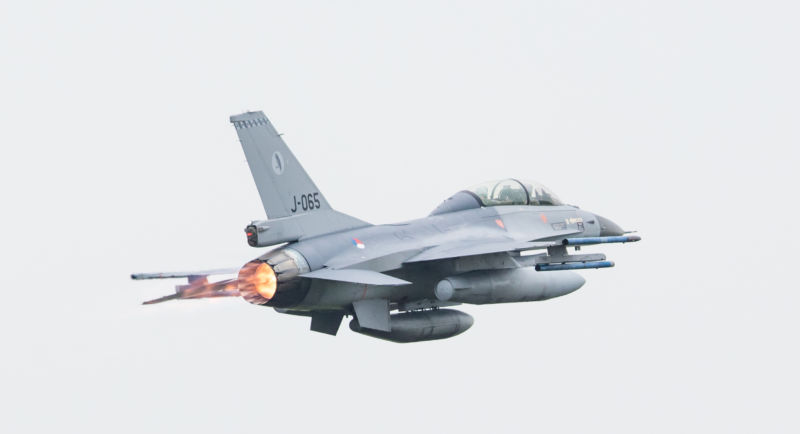
The Netherlands’ Defense Safety Inspection Agency (Inspectie Veiligheid Defensie) is investigating an incident during a January military exercise in which a Dutch Air Force F-16 was damaged by live fire from a 20-millimeter cannon—its own 20-millimeter cannon. At least one round fired from the aircraft’s M61A1 Vulcan Gatling gun struck the aircraft as it fired at targets on the Dutch military’s Vliehors range on the island of Vlieland, according to a report from the Netherlands’ NOS news service.
Two F-16s were conducting firing exercises on January 21. It appears that the damaged aircraft actually caught up with the 20mm rounds it fired as it pulled out of its firing run. At least one of them struck the side of the F-16’s fuselage, and parts of a round were ingested by the aircraft’s engine. The F-16’s pilot managed to land the aircraft safely at Leeuwarden Air Base.
The incident reflects why guns on a high-performance jet are perhaps a less than ideal weapon. The Vulcan is capable of firing over 6,000 shots per minute, but its magazine carries only 511 rounds—just enough for five seconds of fury. The rounds have a muzzle velocity of 3,450 feet per second (1050 meters per second). That is speed boosted initially by the aircraft itself, but atmospheric drag slows the shells down eventually. And if a pilot accelerates and maneuvers in the wrong way after firing the cannon, the aircraft could be unexpectedly reunited with its recently departed rounds.
As Popular Mechanics’ Kyle Mizokami reported in 2017, this is not the first time this sort of thing has happened. During flight testing in 1956, a Grumman F-11 Tiger flying from Grumman’s test facility in Riverhead, New York fired a burst from four 20mm cannons toward the Atlantic Ocean. The pilot then entered a steeper dive, kicked in the jet’s afterburners, and went supersonic—when suddenly the windshield blew in and the engine failed. The pilot had caught up with the shells and in the process shot himself down.
Inspectie Veiligheid Defensie Inspector General Wim Bargerbos told NOS that this latest F-16 incident is “a serious case...we therefore want to find out what happened and how we can prevent this in the future.”
Meanwhile, the Dutch Air Force is in the process of replacing the F-16 with the Lockheed F-35A; eight are scheduled to be delivered in 2019. The F-35A carries the four-barrel General Dynamics GAU-22 Equalizer, a 25mm cannon that carries a mere 182 rounds in its magazine—so about two seconds worth of shells. That might make for fewer opportunities for a self-kill.
reader comments
432